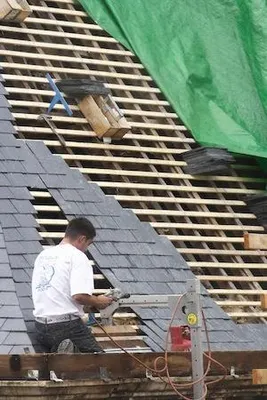Understanding Energy Efficiency and HERS Ratings of New Homes

May 31, 2013
When shopping for a new home energy efficiency isn't something you see as you walk through the  door but it's one of the most important things to educate yourself about as a potential new homeowner. The energy efficiency of your home is going to have a long-term impact on your monthly bills and budget. A brand new home built with energy efficiency in mind should come with an energy rating. In the United States the Residential Energy Services Network (RESNET) is the organization that developed the Mortgage Energy National Home Energy Rating System Standards. RESNET is also responsible for the standards of accreditation of energy rating providers. The scale used to rate a home's energy efficiency is called the HERS Index. (Home Energy Rating System) Depending on where on the scale a home falls determines its level of efficiency. The lower the number the better your energy bills will be over time. On the HERS scale, a typical standard new home is built with a ranking of around 100 on the HERS Index. A home that would rate zero on the scales would be for a building that uses no net purchase of energy. The lower the value the better. Older existing homes can run upwards of 120-150, causing higher and higher energy bills. An Energy Star home should be built with at least 15% more energy efficiency than code, thus putting it at 85 on the HERS Index or better. At Ideal Homes not only do we build Oklahoma's first Geothermal and Solar ready houses but our HERS scores, depending on floor plan, range anywhere from 53-68. We call these our EnergyAdvantage Homes and we look at your whole home as a system when we build it, looking at how all the systems and materials work in conjunction with one another to create the most efficient home. That is far more efficient than a standard new home, and even an Energy Star rated home. What does this mean to the homeowner? Lower monthly energy bills over the lifetime of the home. How is a home's HERS index calculated? A computer program is used to calculate the subject home in comparison to a reference home built to the 2006 International Energy Conservation Code. The inspector takes into account aspects of the home relating to window glazing, insulation, on-site energy production (solar, wind, geothermal etc.) energy efficient appliances, and lighting. The reference home is assumed to fall to code minimum with average American usage patterns thus being assigned a 100 point value on the HERS scale. Each point dropped for better efficiency represents a 1% reduction in energy consumption. Though energy efficiency is not something easily seen like beautiful granite counter tops or gleaming hardwood floors, it does make a huge difference in the comfort and livability of your home. When shopping for a new home, hidden features can make all the difference for the long-term enjoyment of your home.
door but it's one of the most important things to educate yourself about as a potential new homeowner. The energy efficiency of your home is going to have a long-term impact on your monthly bills and budget. A brand new home built with energy efficiency in mind should come with an energy rating. In the United States the Residential Energy Services Network (RESNET) is the organization that developed the Mortgage Energy National Home Energy Rating System Standards. RESNET is also responsible for the standards of accreditation of energy rating providers. The scale used to rate a home's energy efficiency is called the HERS Index. (Home Energy Rating System) Depending on where on the scale a home falls determines its level of efficiency. The lower the number the better your energy bills will be over time. On the HERS scale, a typical standard new home is built with a ranking of around 100 on the HERS Index. A home that would rate zero on the scales would be for a building that uses no net purchase of energy. The lower the value the better. Older existing homes can run upwards of 120-150, causing higher and higher energy bills. An Energy Star home should be built with at least 15% more energy efficiency than code, thus putting it at 85 on the HERS Index or better. At Ideal Homes not only do we build Oklahoma's first Geothermal and Solar ready houses but our HERS scores, depending on floor plan, range anywhere from 53-68. We call these our EnergyAdvantage Homes and we look at your whole home as a system when we build it, looking at how all the systems and materials work in conjunction with one another to create the most efficient home. That is far more efficient than a standard new home, and even an Energy Star rated home. What does this mean to the homeowner? Lower monthly energy bills over the lifetime of the home. How is a home's HERS index calculated? A computer program is used to calculate the subject home in comparison to a reference home built to the 2006 International Energy Conservation Code. The inspector takes into account aspects of the home relating to window glazing, insulation, on-site energy production (solar, wind, geothermal etc.) energy efficient appliances, and lighting. The reference home is assumed to fall to code minimum with average American usage patterns thus being assigned a 100 point value on the HERS scale. Each point dropped for better efficiency represents a 1% reduction in energy consumption. Though energy efficiency is not something easily seen like beautiful granite counter tops or gleaming hardwood floors, it does make a huge difference in the comfort and livability of your home. When shopping for a new home, hidden features can make all the difference for the long-term enjoyment of your home.


